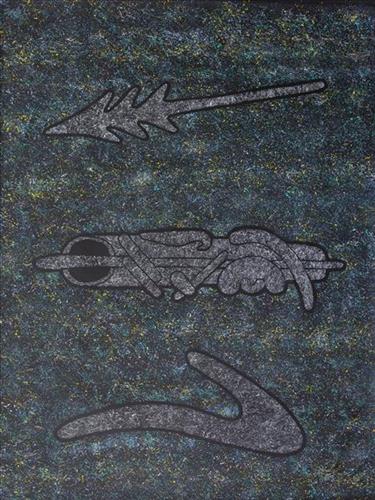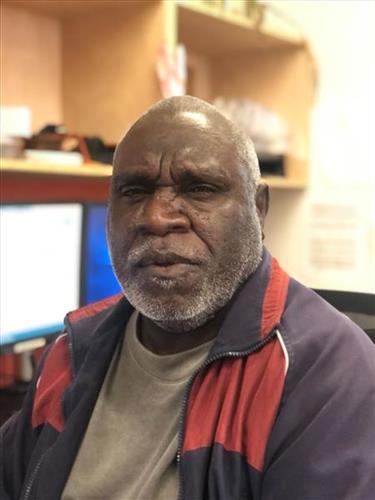111582245425
Artefact
Here Charlie has painted carved artefacts.
Martu have been carving objects out of wood for as long as they have carved a life out of the desert. Kurlata (spears), woomera (spear throwers), pilpin (clubs), jurna (hitting sticks), jara (shields), karli (boomerangs), wana (digging-sticks), and piti (timber bowls used for carrying food and water) were the principal technologies of survival in the desert ecology. These tools were typically carved from wanari (mulga), mulunturu (desert oak), yurungkura (river red gum) and mijarrpa (bloodwoods).
As the economic grounds of desert life shifted throughout the course of the twentieth century, from mobile hunter-gatherer subsistence to an equally mobile (but materially transformed) life on communities, in houses, with stores for food, so did the function of some of those technologies in desert life. While carved objects retain enormous social and ceremonial importance in Martu life, they are no longer used for hunting and gathering. Subsequently, the need to produce these objects to serve their original functions has diminished. However, the capacity and desire to produce them, to redefine them in new contexts, continues among desert artisans. Produced today as sculptural forms, they remain, as ever, an integral part of the evolving Martu cultural economy.




